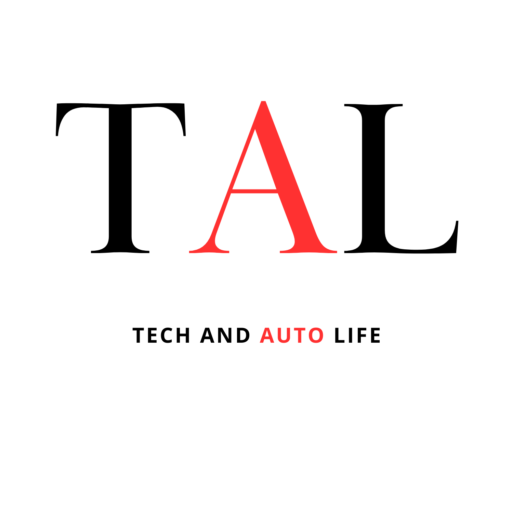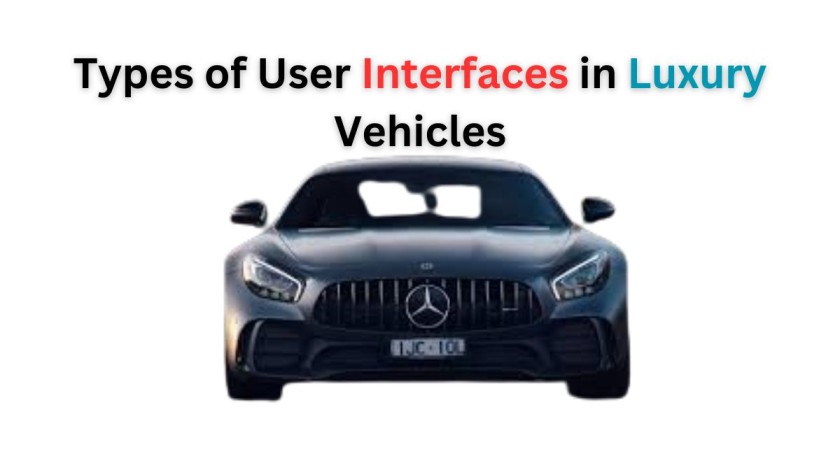Table of Contents
introduction:
Luxury vehicles have long been synonymous with automotive excellence, consistently setting the bar higher with their seamless blend of superior performance, exceptional comfort, and cutting-edge technology. These vehicles are not just about getting from point A to point B; they represent a lifestyle choice, a statement of sophistication and technological prowess. Among the myriad innovations that define luxury cars, one of the most transformative in recent years has been the evolution of user interfaces (UI).
User interfaces in luxury vehicles have evolved far beyond traditional dashboards and control panels. They now encompass a wide array of sophisticated systems designed to enhance every aspect of the driving experience. These interfaces are meticulously crafted not only for their aesthetic appeal but also for their functional superiority. They ensure that drivers and passengers alike can access a host of features with unprecedented ease and efficiency, all while maintaining a focus on safety and convenience.
In the past, user interfaces in cars were limited to basic controls for audio and climate systems. Today, luxury vehicles boast an array of advanced UIs that include high-resolution touchscreens, voice-controlled systems, gesture recognition, augmented reality displays, and haptic feedback mechanisms. Each of these technologies is engineered to make the driving experience more intuitive, immersive, and connected.
For instance, touchscreens in luxury cars are designed to be as responsive and user-friendly as the latest smartphones, offering drivers a familiar and comfortable way to interact with their vehicle’s features. Voice-controlled interfaces allow for hands-free operation of many functions, reducing distractions and enhancing safety. Gesture controls bring a futuristic feel, enabling drivers to perform tasks with simple hand movements, while augmented reality displays provide real-time information directly in the driver’s line of sight, improving navigation and awareness. Haptic feedback, meanwhile, adds a tactile dimension to touchscreens and other controls, ensuring drivers receive physical confirmation of their inputs.
In this blog, we will delve into the various types of user interfaces that are redefining luxury vehicles. We’ll explore how each technology works, its benefits, and the specific models that showcase these innovations. By understanding these advanced interfaces, we gain insight into how they are revolutionizing our interaction with cars, making the driving experience not only more enjoyable but also safer and more convenient than ever before.
Types of User Interfaces in Luxury Vehicles:
(1) Touchscreen Interfaces:
Touchscreens have become ubiquitous in luxury vehicles, replacing traditional buttons and knobs. These interfaces offer a sleek and modern look while providing intuitive control over various car functions. High-resolution displays, often equipped with haptic feedback, allow drivers and passengers to control everything from navigation and entertainment to climate settings with just a few taps.
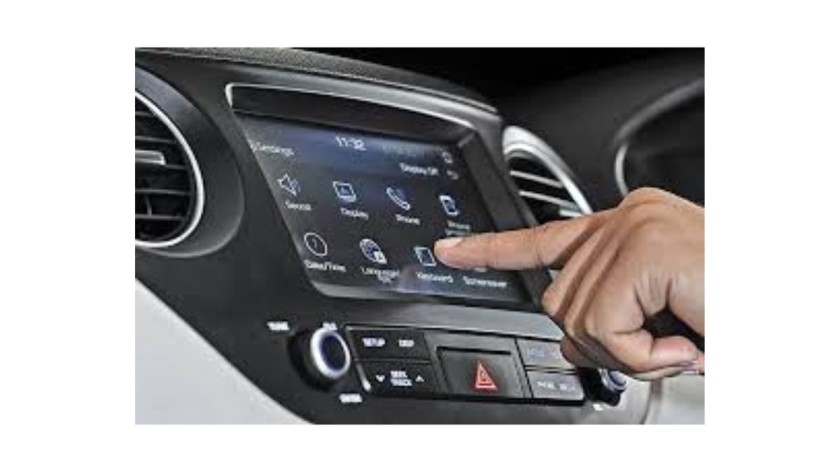
Advantages:
- Intuitive and easy to use: Touchscreens mimic the familiar experience of smartphones and tablets, making them user-friendly.
- Customizable home screens: Drivers can personalize the layout and features they use most often, ensuring quick access.
- Integration with smartphones and other devices: Many systems support Apple CarPlay, Android Auto, and other connectivity options, allowing seamless integration of personal devices.
Popular Models:
- Tesla Model S: Known for its large, tablet-like center screen that controls almost all vehicle functions.
- Mercedes-Benz S-Class: Features the MBUX system with a dual-screen setup, providing a highly responsive and interactive experience.
- BMW 7 Series: Equipped with the iDrive system, which combines touchscreen capabilities with other control methods for versatility.
(2) Voice-Controlled Interfaces:
Voice recognition technology has made significant strides, and luxury vehicles are leveraging this advancement to provide hands-free control. Modern voice-controlled interfaces can understand natural language commands, allowing drivers to perform tasks without taking their hands off the wheel or their eyes off the road.
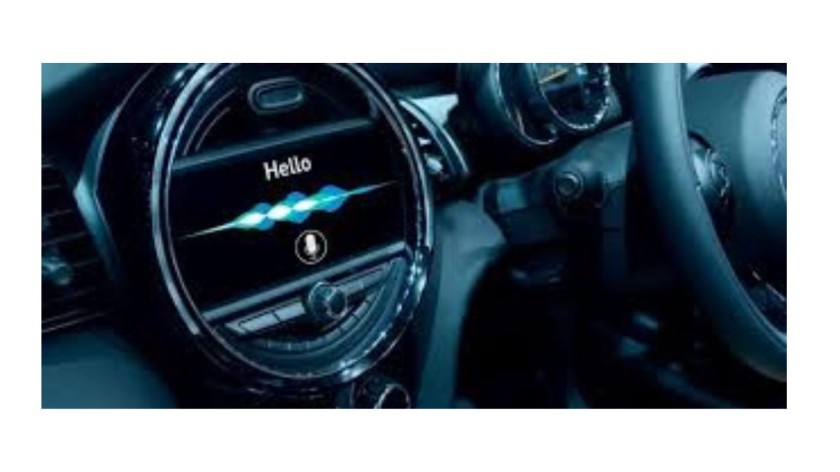
Advantages:
- Enhanced safety and convenience: By using voice commands, drivers can keep their focus on driving, reducing the risk of distraction.
- Minimizes driver distraction: Simple voice commands can control navigation, make calls, and manage music, all without looking away from the road.
- Seamless integration with virtual assistants: Many systems now integrate with popular virtual assistants like Siri, Google Assistant, and Amazon Alexa, extending the vehicle’s capabilities.
Popular Models:
- Audi A8: Features a sophisticated voice control system that understands a wide range of natural language commands.
- BMW 5 Series: Includes the BMW Intelligent Personal Assistant, which learns driver preferences and habits over time.
- Lexus LS: Equipped with an advanced voice recognition system that provides precise and responsive control.
(3) Gesture-Controlled Interfaces:
Gesture control is an emerging technology that adds a futuristic touch to luxury vehicles. This system allows drivers to perform specific actions using simple hand gestures. For instance, a wave of the hand can adjust the volume, and a pinch gesture can zoom in on the navigation map.
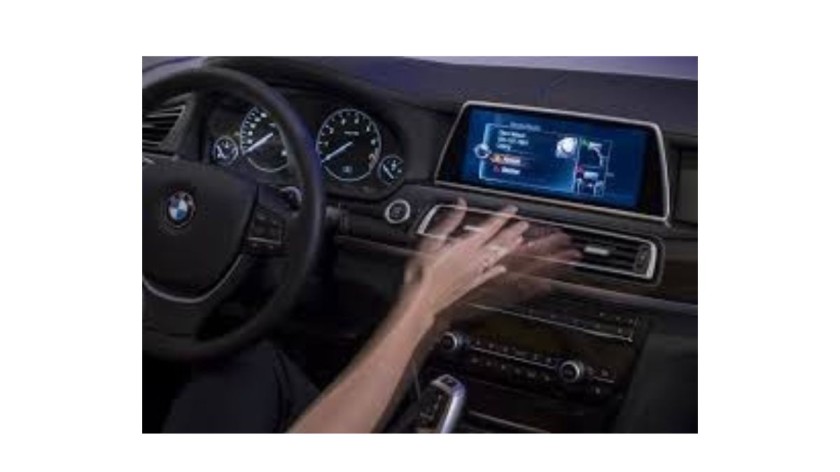
Advantages:
- Reduces the need for physical contact: Gestures eliminate the need to touch surfaces, which can be particularly useful for frequently used functions.
- Provides a high-tech, futuristic experience: Adds an element of innovation and sophistication to the car’s interior.
- Can be more intuitive for some functions: Simple gestures can be more natural and quicker than navigating through menus.
Popular Models:
- BMW 7 Series: Features a gesture control system that can recognize a range of hand movements to control various functions.
- Mercedes-Benz E-Class: Offers gesture control for functions like opening the sunroof or adjusting climate settings.
(4) Augmented Reality (AR) Interfaces:
Augmented reality is making its way into luxury vehicles, primarily through head-up displays (HUDs) that project information onto the windshield. This technology can overlay navigation instructions, speed limits, and other critical information directly in the driver’s line of sight, enhancing situational awareness and safety.
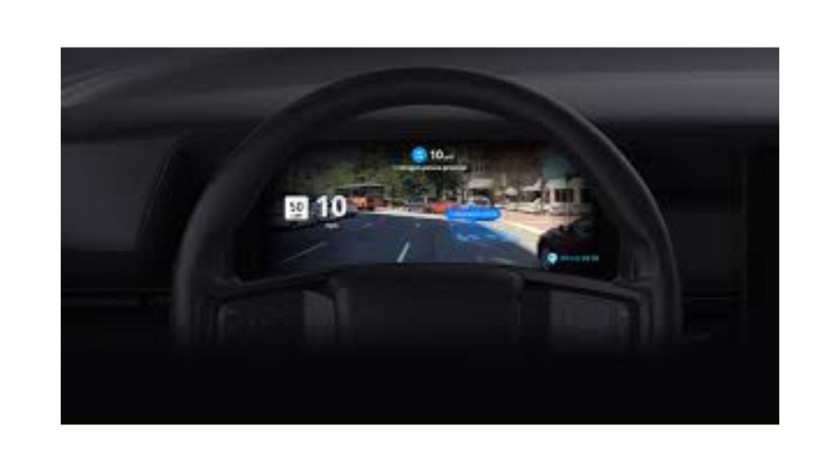
Advantages:
- Provides real-time, context-aware information: Drivers receive relevant information without taking their eyes off the road.
- Keeps the driver’s focus on the road: Critical data such as navigation directions and speed are projected in the driver’s natural line of sight.
- Enhances safety and navigation accuracy: Reduces the risk of missed turns or sudden stops due to unclear instructions.
Popular Models:
- Mercedes-Benz S-Class: Offers an advanced AR HUD that displays navigation and other critical information directly on the windshield.
- Audi Q7: Features an AR HUD that overlays important driving information on the windshield.
(5) Haptic Feedback Interfaces:
Haptic feedback technology adds a tactile dimension to touchscreens and other control surfaces. This technology provides physical feedback to the driver, such as vibrations or resistance, to confirm selections and inputs. This can enhance the user experience by making interactions feel more precise and responsive.
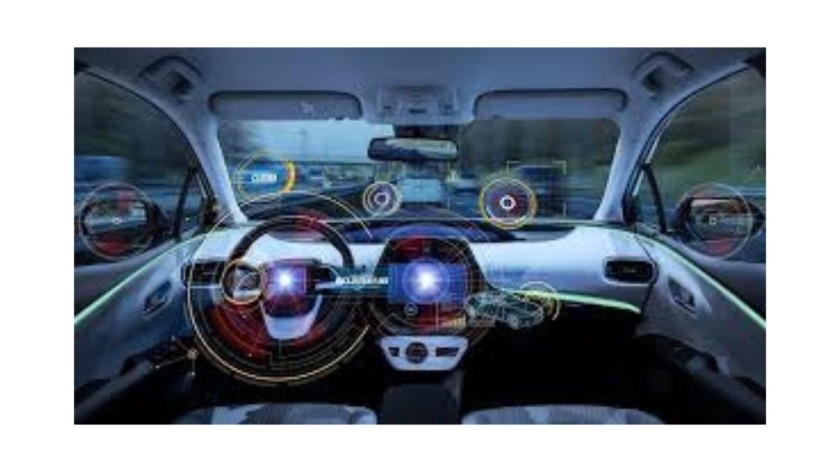
Advantages:
- Improves user interaction accuracy: Physical feedback confirms that inputs have been registered, reducing errors.
- Provides a more immersive experience: Enhances the feel of interacting with the car’s controls, making it more engaging.
- Can be integrated with touchscreens and control knobs: Versatile application in various UI elements, enhancing overall usability.
Popular Models:
- Audi A8: Uses haptic feedback in its touchscreen controls to provide a tactile response for each input.
- Lexus LS: Incorporates haptic feedback in its Remote Touch Interface for precise control.
(6) Multi-Function Control Knobs:
While touchscreens and voice controls are gaining popularity, many luxury vehicles still feature multi-function control knobs. These knobs, often located on the center console, allow drivers to navigate menus and make selections without touching the screen, which can be safer and more convenient while driving.
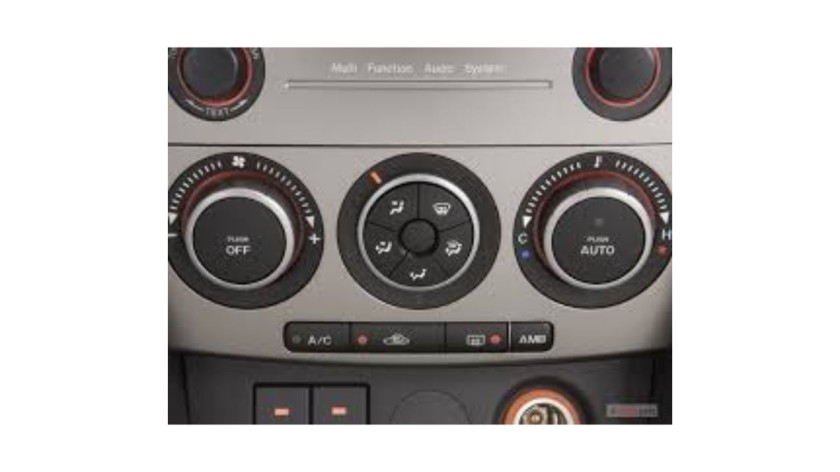
Advantages:
- Reduces fingerprints and smudges on screens: Keeps the display clean and readable.
- Can be easier to use while driving: Physical knobs can be operated by feel, reducing the need to look away from the road.
- Often combined with touchpad inputs: Enhances versatility and control precision.
Popular Models:
- BMW iDrive: A well-known system that combines a rotary knob with a touchpad for versatile control.
- Audi MMI: Uses a central control knob and touchpad to navigate menus and control various functions.
- Mercedes-Benz COMAND: Features a rotary knob and touchpad combination for intuitive control of the infotainment system.
Conclusion:
The evolution of user interfaces in luxury vehicles is transforming the driving experience, making it more intuitive, safe, and enjoyable. From touchscreens and voice control to gesture recognition and augmented reality, these advanced systems are setting new standards in automotive technology. As these technologies continue to evolve, we can expect even more innovative and immersive experiences in the world of luxury automobiles.
Whether you’re a tech enthusiast or simply appreciate the finer things in life, the user interfaces in today’s luxury vehicles offer a glimpse into the future of driving. Stay tuned for more updates as we continue to explore the latest trends and innovations in the automotive world.
Read more- Interior Features: Budget Cars vs Luxury Cars
FAQ-
What are the main types of user interfaces in luxury vehicles?
Luxury vehicles feature several advanced user interfaces, including touchscreen interfaces, voice-controlled systems, gesture-controlled interfaces, augmented reality (AR) displays, haptic feedback mechanisms, and multi-function control knobs.
How do touchscreen interfaces enhance the driving experience in luxury cars?
Touchscreen interfaces in luxury cars offer intuitive and easy-to-use controls for various functions such as navigation, entertainment, and climate settings. They provide high-resolution displays, often with customizable home screens and integration with smartphones, enhancing convenience and connectivity.
What advantages do voice-controlled interfaces offer in luxury vehicles?
Voice-controlled interfaces allow for hands-free operation, minimizing driver distraction and enhancing safety. These systems can understand natural language commands and seamlessly integrate with virtual assistants like Siri, Google Assistant, and Alexa, providing a highly convenient and responsive user experience.
What is gesture control, and how does it work in luxury cars?
Gesture control is a technology that allows drivers to perform specific actions using simple hand movements. For example, waving a hand to adjust the volume or pinching to zoom in on a navigation map. This technology reduces the need for physical contact with controls and provides a high-tech, futuristic experience.
What role does augmented reality (AR) play in luxury vehicle interfaces?
Augmented reality in luxury vehicles is primarily used in head-up displays (HUDs) that project information onto the windshield. This technology overlays navigation instructions, speed limits, and other critical information directly in the driver’s line of sight, improving situational awareness and safety.
How does haptic feedback enhance user interfaces in luxury vehicles?
Haptic feedback adds a tactile dimension to touchscreens and other control surfaces by providing physical responses, such as vibrations or resistance, to confirm selections and inputs. This technology enhances interaction accuracy and provides a more immersive and responsive user experience.
What are multi-function control knobs, and why are they still used in luxury cars?
Multi-function control knobs are physical controls located on the center console, allowing drivers to navigate menus and make selections without touching the screen. They reduce fingerprints and smudges on displays and can be easier to use while driving, enhancing safety and convenience.
Which luxury car models are known for their advanced user interfaces?
Some notable luxury car models with advanced user interfaces include:
*Tesla Model S: Known for its large touchscreen interface.
*Mercedes-Benz S-Class: Features the MBUX system with dual screens and AR HUD.
*BMW 7 Series: Offers gesture control and the iDrive system.
*Audi A8: Equipped with haptic feedback touchscreens and voice control.
*Lexus LS: Incorporates haptic feedback and advanced voice recognition.
How do these advanced interfaces improve safety in luxury vehicles?
Advanced interfaces improve safety by allowing drivers to access important functions and information without taking their hands off the wheel or their eyes off the road. Voice controls, gesture controls, and AR displays reduce distractions, while haptic feedback ensures precise and confident interactions.
What can we expect from the future of user interfaces in luxury cars?
The future of user interfaces in luxury cars will likely see further integration of AI and machine learning to provide more personalized experiences. We can expect more seamless connectivity with smart home devices, greater use of augmented reality for enhanced navigation and safety, and continued advancements in gesture and voice control technologies.
